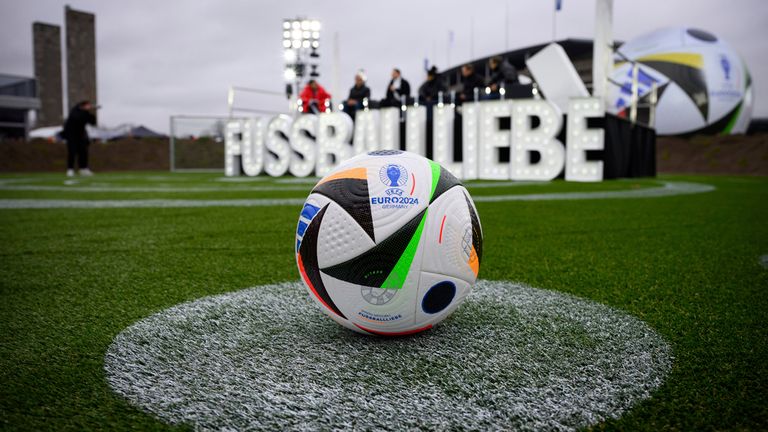A microchip inside Adidas’s Euro 2024 ball will be used to help referees make handball decisions at next summer’s tournament.
The German sportswear brand says its Fussballliebe will contain a rechargeable microchip that can send precise ball data to video match officials in real time.
The chip was used in the semi-automated offside decision-making process in the 2022 FIFA World Cup in Qatar.
The technology will now be used in offside decisions at the men’s Euro 2024 tournament in Germany next summer, according to Adidas.
As first reported by The Times, the chip will also be used in conjunction with limb-tracking technology to help determine whether there has been a handball in the lead-up to a goal by showing where exactly the ball has struck the body.
“Our Connected Ball Technology will be used during the competition,” a spokesperson told Sky News.
How does it work?
Adidas’s Euro 2024 football contains a rechargeable motion sensor which is positioned at the centre of the ball.
The microchip can detect up to 500 movements per second – meaning it can accurately record when a ball is touched by a player.
It was used alongside movement-tracking technology in the semi-automated offside decision-making system of last year’s FIFA World Cup to detect the moment the ball was played in the build-up to a goal.
The system is semi-automated because referees still have to decide whether a player in an offside position is interfering with play.
UEFA – the governing body responsible for the European Championships – already uses a similar semi-automated offside system in its premier club competition, the Champions League.
However, it does not currently involve the use of a microchipped ball.
Instead, it uses a number of cameras and artificial intelligence (AI) to determine the moment the ball is played to the eventual goalscorer.
The semi-automated offside system is different from the VAR system used in the Premier League, which involves officials manually drawing lines to measure whether a player is in an offside position.
The lines are drawn based on five cameras calibrated before the match, with the system also able to use broadcast cameras to identify the point of contact with the ball by the attacker and synchronise all cameras for this purpose.
The Premier League is reportedly considering switching to a semi-automated offside system next season – though nothing has been announced.
Handball decisions in the Premier League are also reviewed with the current VAR system.
